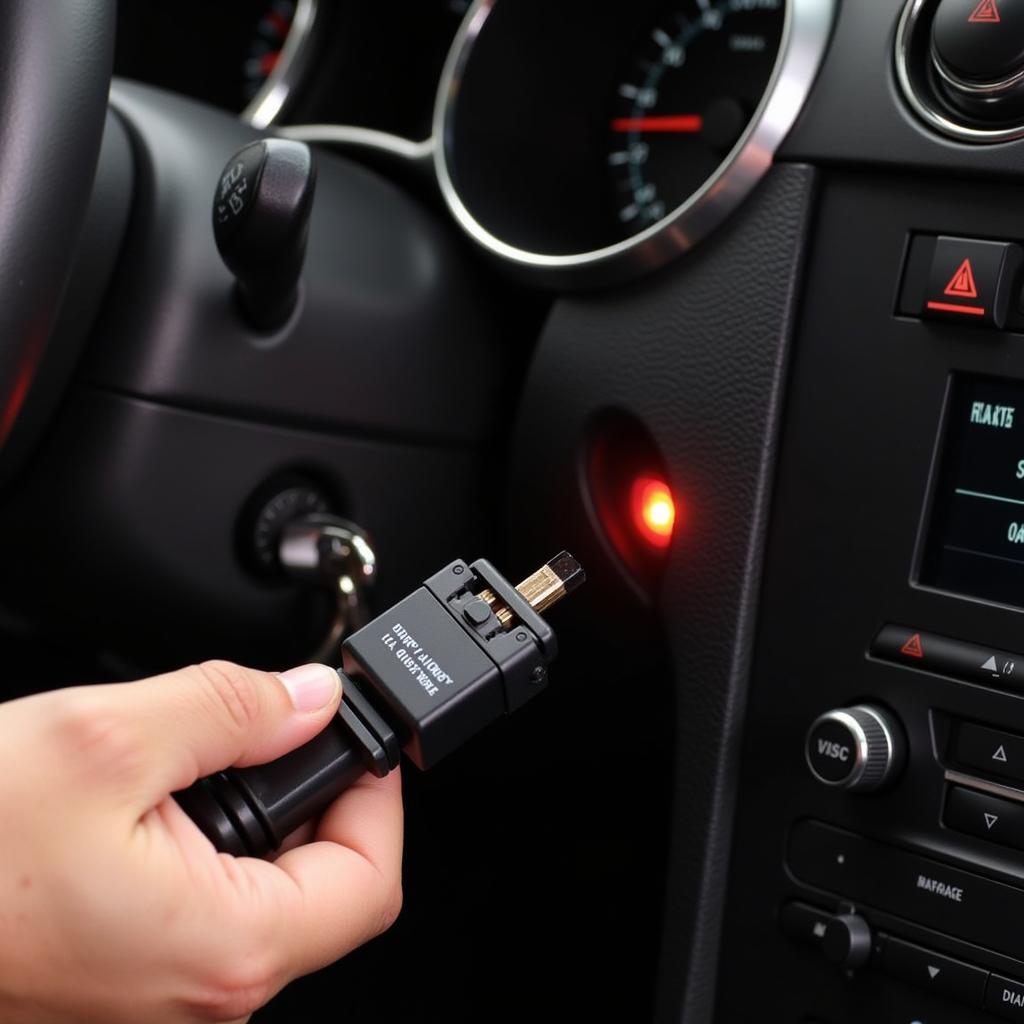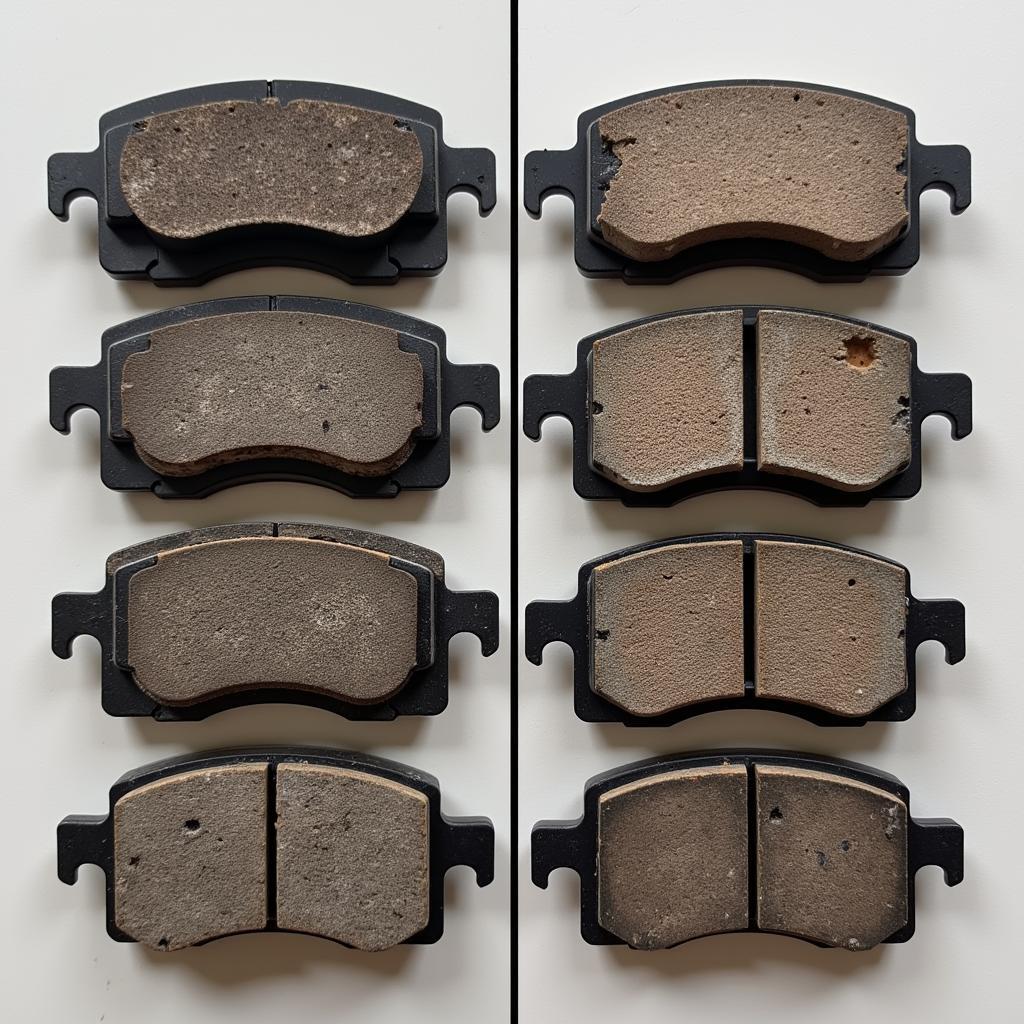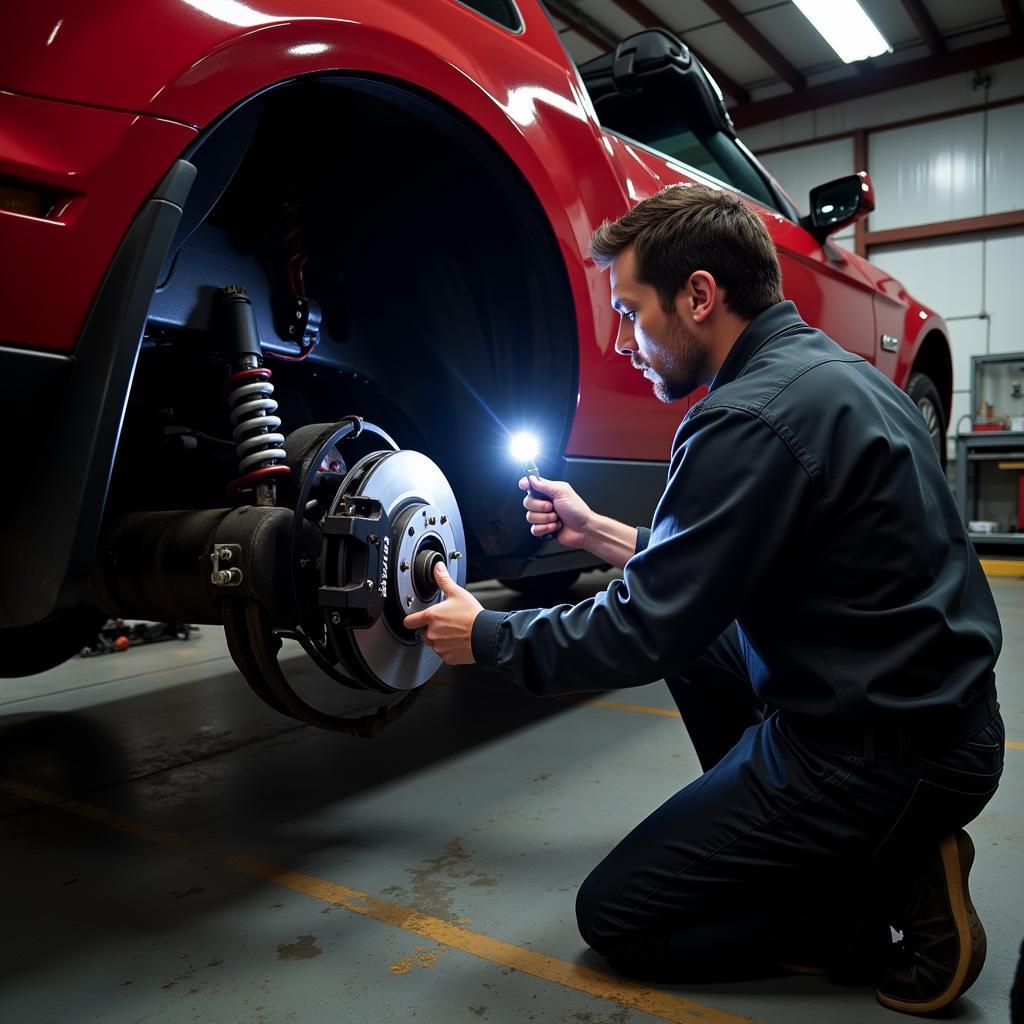So, your 2010 Mustang’s brake warning light is glaring at you, refusing to budge even though you swear your parking brake is disengaged? Don’t worry, you’re not alone. This is a common issue in these iconic cars, and it doesn’t always signify a major problem. This article will walk you through the possible culprits behind this persistent light and guide you on how to address them, potentially saving you a trip to the mechanic.
Common Reasons Your Brake Light Won’t Turn Off
The brake warning light in your Mustang is designed to illuminate for two primary reasons: engaging the parking brake and a drop in brake fluid level. However, several other factors can also trigger this pesky light. Let’s shed light on some of the most common ones:
-
Low Brake Fluid: This is the most likely culprit. As brake pads wear down, the brake fluid level naturally drops. If it dips below the minimum level, the brake warning light will illuminate to alert you.
-
Worn Brake Pads: As mentioned earlier, worn brake pads can indirectly cause the brake light to come on due to low brake fluid. However, severely worn brake pads can also trigger a dedicated wear sensor, directly turning on the warning light.
-
Faulty Brake Light Switch: Located behind your brake pedal, this switch signals when the pedal is pressed. If it malfunctions, it can send a continuous signal, causing the brake light to stay on even when the brakes aren’t applied.
-
ABS Issues: While less common, problems within your Anti-lock Braking System (ABS) can also trigger the brake warning light. This typically indicates a fault with the ABS module, wheel speed sensors, or related wiring.
 Faulty Brake Light Switch in a Car
Faulty Brake Light Switch in a Car
Troubleshooting the Persistent Brake Light
Before heading to the mechanic, there are a few simple checks you can perform at home to potentially pinpoint the problem:
-
Check Your Parking Brake: It might seem obvious, but ensure your parking brake is fully disengaged. Sometimes a slight bump or incomplete release can be the culprit.
-
Inspect the Brake Fluid Level: Locate the brake fluid reservoir under the hood (refer to your owner’s manual for the exact location). Check the fluid level – it should be between the “Min” and “Max” lines. If it’s low, adding brake fluid might temporarily solve the problem, but it’s crucial to investigate the underlying cause of the fluid loss.
-
Visually Inspect Your Brake Pads: If possible, take a look at your brake pads through the spaces between the wheel spokes. If they appear significantly thin or you notice deep grooves, it’s time for a replacement.
 Worn Brake Pads vs. New Brake Pads
Worn Brake Pads vs. New Brake Pads
When to Seek Professional Help
If the basic checks don’t resolve the issue, it’s time to consult a professional mechanic experienced in diagnosing and repairing Mustangs. They have the expertise and specialized tools to accurately diagnose the problem and recommend the appropriate course of action.
“Addressing brake issues promptly is crucial,” says Jake Carter, a seasoned automotive electrician specializing in Ford vehicles. “Ignoring a persistent brake warning light can lead to more extensive damage and compromise your safety on the road.”
FAQs
Can I drive my Mustang with the brake light on?
While it’s technically possible to drive a short distance with the brake light on, it’s strongly advised against. Driving with potentially compromised brakes is incredibly risky and could lead to an accident.
How much does it cost to fix a brake warning light issue?
The cost can vary significantly depending on the underlying cause. A simple brake fluid top-up might cost a few dollars, while replacing a faulty ABS module could set you back several hundred dollars.
How often should I check my brake fluid level?
It’s recommended to check your brake fluid level at least once a month and more frequently if you notice any changes in brake pedal feel or performance.
 Mechanic Inspecting Car Brakes
Mechanic Inspecting Car Brakes
Conclusion
A persistent brake warning light in your 2010 Mustang should never be ignored. While it can be a simple fix like low brake fluid, it could also indicate a more serious problem requiring professional attention. By following the troubleshooting steps outlined above and seeking expert help when needed, you can ensure your Mustang’s braking system stays in top condition, keeping you safe on the road.
